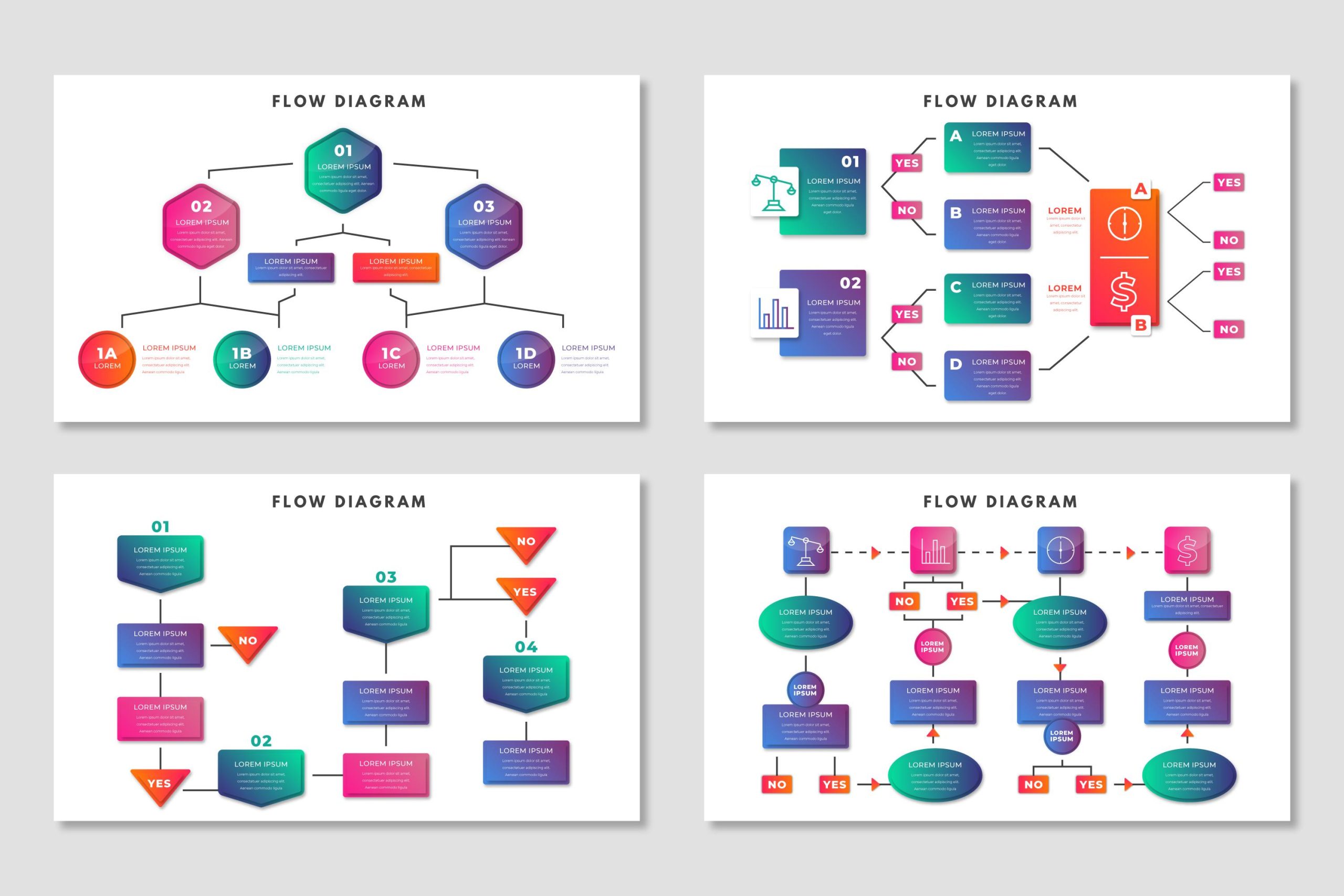Introduction
Are you embarking on a journey toward a business analyst role? Congratulations! The world of business analysis is more dynamic than ever, with the demand for skilled professionals on the rise. As organizations increasingly recognize business analysts’ pivotal role in driving informed decision-making, the opportunities for individuals like you are expanding exponentially. As you prepare to showcase your skills and knowledge in an interview, you must familiarize yourself with common business analyst interview questions.
To assist you in this transformative journey, we’ve compiled a comprehensive list of 30+ business analyst interview questions. These questions span from basic to advanced levels, providing you with a holistic preparation toolkit.

Business Analyst Interview Questions
Here is the list of business analyst interview questions.
Note: The business analyst interview questions below are a mix of basic, intermediate, and advanced levels.
1. How are you a good fit for our company’s business analyst role?
I am well-suited for your company’s business analyst role due to my strong analytical skills and keen ability to interpret data and draw actionable insights. My experience in conducting thorough market research and trend analysis aligns with your company’s commitment to staying ahead in the industry. Additionally, my effective communication skills and collaborative approach make me an asset in translating complex data into meaningful business recommendations. My blend of technical expertise and business acumen will contribute positively to the success of your team and the achievement of company objectives.
2. Are you aware of the MoSCoW and SWOT?
Yes, I am familiar with both MoSCoW and SWOT techniques. MoSCoW is a prioritization technique used in project management, standing for Must-haves, Should-haves, Could-haves, and Won’t-haves. It helps in categorizing and prioritizing requirements based on their importance.
On the other hand, SWOT analysis stands for Strengths, Weaknesses, Opportunities, and Threats. It is a strategic planning tool used to identify and evaluate the internal and external factors that can impact the performance and success of a business or project.
Both techniques are valuable in different contexts, with MoSCoW aiding in project planning and prioritization and SWOT offering a comprehensive assessment of a business or project’s current situation and potential future outcomes.
3. What is business modeling?
Business modeling is the process of creating abstract representations of a business and its various components to understand, analyze, and improve its structure, processes, and functions. This technique uses graphical and textual tools to depict different aspects of a business, such as organizational structure, processes, data flow, and resources. Business modeling helps stakeholders visualize and comprehend complex business scenarios, facilitating communication and decision-making. Common types of business models include process models, data models, organizational charts, and use case diagrams. The goal is to provide a clear and holistic view of the business, aiding in strategic planning and optimizing operations.
4. How do you update yourself on the latest business trends and knowledge?
I ensure my continuous professional development by regularly engaging in industry publications, attending relevant conferences, and participating in online forums. Additionally, I subscribe to newsletters, follow thought leaders on social media, and actively seek out webinars and courses to stay abreast of the latest business trends and knowledge. This commitment to ongoing learning ensures that my skills and insights remain current and valuable in the dynamic field of business analysis. Also, I participate in events and conferences to establish connections within the business community.
5. What is a workflow?
A workflow is a visual representation of a series of connected steps or activities within an organization. It outlines the logical progression of tasks, indicating how information, materials, or tasks move from one participant to another. Consider an HR workflow for employee onboarding, illustrating steps from document submission to orientation, ensuring a systematic and efficient process.
6. Can you explain what GAP analysis is?
GAP analysis compares the current state of a system or process with the desired future state to identify discrepancies or “gaps.” A BA can recommend solutions by assessing what is currently in place versus what should be. In manufacturing, GAP analysis may reveal inefficiencies in production processes, leading to technological adoption or process optimization recommendations.
7. What is a functional requirement?
A functional requirement outlines specific behaviors or functions a system must exhibit. It defines how the system should respond to various inputs, ensuring that it meets user needs. In a banking system, a functional requirement might specify that the software must allow users to transfer funds between accounts securely, detailing the steps involved and system responses.
8. What is a non-functional requirement?
Non-functional requirements focus on the qualities a system must possess, such as performance, security, or usability. Unlike functional requirements, they describe how the system should perform rather than what it should do. For example, a non-functional requirement for an e-commerce platform could specify that it must support a minimum of 1,000 concurrent users without performance degradation during peak hours.
9. What is a business model analysis?
Business model analysis involves examining a business model’s fundamental structures and components to understand how an organization creates, delivers, and captures value. A business model analysis might explore revenue streams, customer segments, and key partnerships for a subscription-based streaming service to ensure sustainability and growth.

10. What are the various kinds of diagrams you use as a business analyst?
As a business analyst, various diagrams visually represent different aspects of a business. Common diagrams include:
- Process Flow Diagrams (PFD)
Illustrate the sequential steps and interactions within a business process.
- Data Flow Diagrams (DFD)
Depict the flow of data within a system, showcasing processes, data stores, and data movements.
- Use Case Diagrams
Outline system functionalities by showcasing interactions between users and the system.
- Class Diagrams
Represent the structure of a system, including classes, attributes, and relationships.
- Sequence Diagrams
Display the chronological order of interactions between system components or actors.
- State Diagrams
Illustrate the different states a system or object undergoes and the transitions between them.
- Entity-Relationship Diagrams (ERD)
Visualize the relationships between entities in a database.
- Activity Diagrams:
Model workflows and activities within a system or process.
- Organizational Charts
Display the hierarchical structure of an organization, showing reporting relationships.
- Decision Trees
Represent decision-making processes and outcomes in a structured manner.
These diagrams are powerful communication tools, aiding in requirements analysis, system design, and overall business understanding.
11. What is UML?
Unified Modeling Language (UML) is a standardized modeling language that uses various diagrams to represent a system’s design and structure visually. For instance, in a software development project, a BA might use UML class diagrams to illustrate the relationships between different classes, aiding developers in understanding the system architecture.
12. What is BRD? How is it different from SRS?
BRD, or Business Requirements Document, outlines the business solution to a problem and guides project development. It focuses on business needs, objectives, and the desired outcomes. On the other hand, SRS, or Software Requirements Specification, details the functional and non-functional requirements for software development. While the BRD is more business-centric, emphasizing the “what” and “why,” the SRS is technical, providing a detailed breakdown of “how” the software should function. Both documents are crucial in the development lifecycle, with the BRD setting the business context and the SRS translating those requirements into technical specifications.
13. How do you guarantee that your analyses yield valuable insights for the business?
I ensure the effectiveness of my analyses by employing a systematic approach. This involves thoroughly gathering requirements to understand business needs, utilizing appropriate analytical tools and methodologies, and validating findings against established benchmarks. Additionally, I actively engage with stakeholders to align analysis outcomes with organizational goals. Regular feedback loops and iterative refinement of analyses contribute to their relevance and effectiveness. By maintaining a keen awareness of industry trends and continuously updating my analytical skill set, I ensure that the insights extracted are accurate and strategically beneficial for informed decision-making.
14. what are the key elements of SRS?
The key elements of an SRS are:
- Scope of Work
- Functional Requirements
- Non-Functional Requirements
- Dependencies
- Data Model
- Assumptions
- Constraints
- Acceptance Criteria
15. What is a business process?
A business process is a series of interrelated tasks or activities designed to achieve a specific business goal. For example, in a customer relationship management (CRM) system, the business process of lead generation may include steps like lead identification, qualification, and assignment to sales teams.
16. What is a business rule?
A business rule is a specific statement that dictates or constrains a business decision or operation. In a supply chain management system, a business rule could specify that inventory levels must not fall below a certain threshold to prevent stockouts, ensuring smooth operations.
17. How do you manage conflicting priorities when simultaneously engaged in multiple projects as a business analyst?
As a business analyst, adept prioritization is key to navigating conflicting demands across multiple projects. I employ a systematic approach, assessing project deadlines, stakeholder urgencies, and overall project impact. I collaborate closely with stakeholders to understand the criticality of tasks and negotiate realistic timelines. Additionally, I leverage project management tools to maintain clear visibility into project statuses and dependencies, ensuring that my efforts align with overarching organizational goals. Proactive communication and a flexible mindset allow me to adapt swiftly to changing priorities, fostering successful project outcomes amidst dynamic work environments.
18. What is Pareto Analysis?
Pareto Analysis, named after economist Vilfredo Pareto, is a decision-making technique that prioritizes tasks or issues by focusing on the vital few factors that contribute most significantly to a problem. The analysis is based on the 80/20 rule, suggesting that approximately 80% of effects come from 20% of causes. This method helps identify and prioritize key factors influencing performance, guiding efforts for maximum impact. Pareto Analysis aims to achieve more efficient and impactful solutions by concentrating resources on addressing the critical few aspects, making it a valuable tool for strategic decision-making and process improvement.
19. What is Kano analysis?
Kano Analysis is a customer satisfaction model developed by Professor Noriaki Kano. It categorizes product features into five classes: Basic Needs, Performance Needs, Excitement Needs, Indifferent Needs, and Reverse Needs. Basic Needs represent essential features expected by customers, Performance Needs correlate satisfaction with functionality, and Excitement Needs offer unexpected delights. Indifferent Needs have little impact, and Reverse Needs, while implemented, lead to dissatisfaction. By classifying features based on their impact and satisfaction levels, Kano Analysis helps businesses prioritize and enhance their offerings, ensuring a strategic approach to customer satisfaction and product development.
20. What are the must-have skills of a business analyst?
A proficient business analyst must possess strong analytical and problem-solving skills, adeptness in data interpretation, and a deep understanding of business processes. Effective communication and interpersonal skills are crucial for bridging the gap between stakeholders and technical teams. Proficiency in data modeling, requirements gathering, and process mapping is essential. Familiarity with relevant tools, such as Excel, SQL, and business analysis software, is vital for effective data manipulation and reporting. Continuous learning and adaptability are key, as business analysts must stay abreast of industry trends and technological advancements to provide insightful recommendations for informed decision-making within the organization.
21. How do you prioritize requirements?
Requirements can be prioritized based on business value, criticality, dependencies, and stakeholder needs. In a healthcare IT project, a BA might prioritize the implementation of electronic health record (EHR) features based on regulatory compliance and patient safety.
22. What is your approach to change management?
Change management involves assessing the impact of changes on a project and implementing strategies for a smooth transition. In an organizational software upgrade, a BA might conduct impact assessments, communicate changes to stakeholders, and provide training sessions to ensure a seamless transition to the new system.
23. What is Business model analysis?
Business Model Analysis involves scrutinizing and evaluating an organization’s business model to understand its components and intricacies. It includes assessing revenue streams, cost structures, value propositions, and key partnerships. By analyzing these elements, businesses can identify strengths, weaknesses, and opportunities for improvement, aiding strategic decision-making and enhancing overall organizational efficiency and effectiveness.

24. Tell me about the tools used in business analytics
Business analytics employs a variety of tools to analyze and interpret data for informed decision-making. Some prominent business analytics tools include:
- Microsoft Excel: Widely used for data manipulation and analysis.
- SQL (Structured Query Language): Essential for managing and querying relational databases.
- Tableau: Enables interactive data visualization and business intelligence.
- Power BI: Microsoft’s business analytics tool for data visualization and sharing insights.
- R and Python: Programming languages for statistical analysis and machine learning.
- SAS (Statistical Analysis System): Advanced analytics and data management software suite.
- Google Analytics: Focuses on web analytics and user behavior.
- IBM SPSS: Statistical software for predictive modeling and analysis.
These tools cater to diverse analytics needs, from basic reporting to advanced predictive modeling.
25. What is your approach to risk management?
Risk management involves identifying, assessing, and mitigating risks. A proactive approach might involve organizing risk identification workshops with project teams, creating risk registers, and implementing contingency plans. In a software development project, a BA could work with the team to identify potential risks like technology dependencies and devise strategies to mitigate their impact on project goals.
26. What is Benchmarking?
Benchmarking is a strategic management process that involves comparing an organization’s practices, processes, or performance metrics against those of industry leaders or competitors to identify areas for improvement. This analysis helps businesses understand best practices, enhance efficiency, and achieve superior performance. Benchmarking can encompass various aspects, including operational processes, product quality, and customer satisfaction. By evaluating and adopting successful strategies from top-performing entities, organizations can drive innovation, optimize operations, and ultimately enhance their competitive position in the market. Benchmarking serves as a valuable tool for continuous improvement, fostering a culture of innovation and efficiency within an organization.
27. Explain Data Warehousing
Data warehousing is a centralized repository that integrates data from multiple sources to support business intelligence and reporting activities. It involves data extraction, transformation, and loading (ETL) from diverse operational systems into a dedicated data warehouse storage system. This structured data is organized for efficient querying and analysis. Data warehousing facilitates historical data storage, providing a foundation for decision-making processes. It often employs dimensional modeling to enhance query performance and includes data cleansing and transformation tools. The goal is to provide a unified view of an organization’s data, supporting strategic and operational decision-making.
28. What does BPMN entail, and what are its fundamental components?
BPMN, or Business Process Model and Notation, is a standardized graphical representation for designing, modeling, and documenting business processes. Its basic elements include flow objects (tasks, events, and gateways) representing activities, events, and decision points; connecting objects (sequence flows and message flows) depicting the flow between elements; and swimlanes for organizing processes based on roles or systems. The notation provides a visual and standardized way to communicate complex business processes, fostering clarity and understanding among stakeholders. Overall, BPMN facilitates the modeling and optimization of business processes, promoting efficiency and effectiveness in organizational workflows.
29. Tell me about elicitation techniques in Business Analytics
Elicitation techniques in Business Analytics involve gathering and extracting stakeholder requirements for effective analysis. Common techniques include interviews, where analysts directly engage with stakeholders to collect insights. Surveys and questionnaires are employed for broader data collection. Workshops and brainstorming sessions encourage collaborative idea generation. Observations involve studying users in their environment to understand processes. Prototyping allows stakeholders to visualize and refine requirements iteratively. Document analysis involves scrutinizing existing documentation for valuable information. These techniques facilitate comprehensive requirement gathering, ensuring business analysts obtain accurate and relevant data to drive successful analytics projects and meet organizational objectives.
30. What are the techniques used for requirement prioritization?
Requirement prioritization is crucial in project management to ensure focus on high-impact tasks. Common techniques include:
- MoSCoW Method: Categorizes requirements as Must-haves, Should-haves, Could-haves, and Won’t-haves.
- Kano Model: Classifies features into Basic Needs, Performance Needs, and Excitement Needs, based on customer satisfaction.
- Pairwise Comparison: Ranks requirements by comparing them in pairs to establish relative importance.
- Weighted Scoring Model: Assigns weights to criteria and scores requirements based on their importance.
- Benefit vs. Cost Analysis: Prioritizes requirements by assessing the benefits against associated costs.
- Risk Analysis: Prioritizes based on potential risks and their impact on project success.
These techniques help teams allocate resources effectively and deliver value early in the project lifecycle.
31. Tell me the purpose of the Requirement Traceability Matrix
The Requirement Traceability Matrix (RTM) is a crucial project management and quality assurance tool, linking each requirement to its source and ensuring comprehensive coverage throughout the project lifecycle. It establishes a systematic relationship between business needs, functional specifications, and test cases. By tracking requirements from inception to implementation and testing, the RTM facilitates effective change management, aids in impact analysis, and ensures alignment between stakeholder expectations and delivered outcomes. This matrix enhances transparency, reduces the risk of scope creep, and fosters accountability, ultimately contributing to the successful and on-target delivery of a project’s objectives.
32. What are the four key phases of business development?
Business development involves four key phases: initiation, planning, execution, and closure. The initiation phase involves identifying opportunities and assessing feasibility. Planning involves creating a comprehensive strategy, outlining goals, and allocating resources. During execution, plans are put into action, and progress is monitored. Finally, the closure phase ensures all objectives are met and the project or initiative formally concludes. These phases provide a structured framework for businesses to navigate growth, enhance operations, and achieve sustainable success.
33. Tell me about the business analysis process flow.
Here is the business analysis process flow:
Initiation:
- Identify business needs and opportunities.
- Define the scope and objectives of the analysis.
Planning:
- Develop a detailed project plan.
- Establish communication and stakeholder engagement strategies.
Elicitation:
- Gather requirements through interviews, surveys, and workshops.
- Analyze existing documentation and systems.
Analysis:
- Evaluate gathered requirements for feasibility and alignment.
- Develop models and prototypes to validate solutions.
Documentation:
- Create comprehensive documentation for requirements and findings.
- Ensure clarity and traceability of information.
Communication:
- Effectively convey findings to stakeholders.
- Facilitate feedback and adjustments.
Solution Assessment:
- Evaluate the implemented solution against initial requirements.
- Identify areas for improvement and lessons learned.
Conclusion
The role of a Business Analyst is multifaceted, requiring a blend of technical skills, business acumen, and excellent communication abilities. The business analyst interview questions listed above are designed to assess these competencies. You can approach your Business Analyst interview with confidence and poise by preparing for these questions. Remember, the key to a successful interview is not just about providing the right answers but also demonstrating your problem-solving skills, ability to work under pressure, and commitment to delivering value to the business.
If you find the above-given business analyst interview questions helpful, don’t forget to comment below. We welcome your feedback and suggestions.
Ready to embark on a rewarding career in Business Analytics? Dive deeper into opportunities by exploring our Introduction to Business Analytics. Start your journey now and position yourself for success in the thriving field of business analytics. Your future awaits – seize it today!




